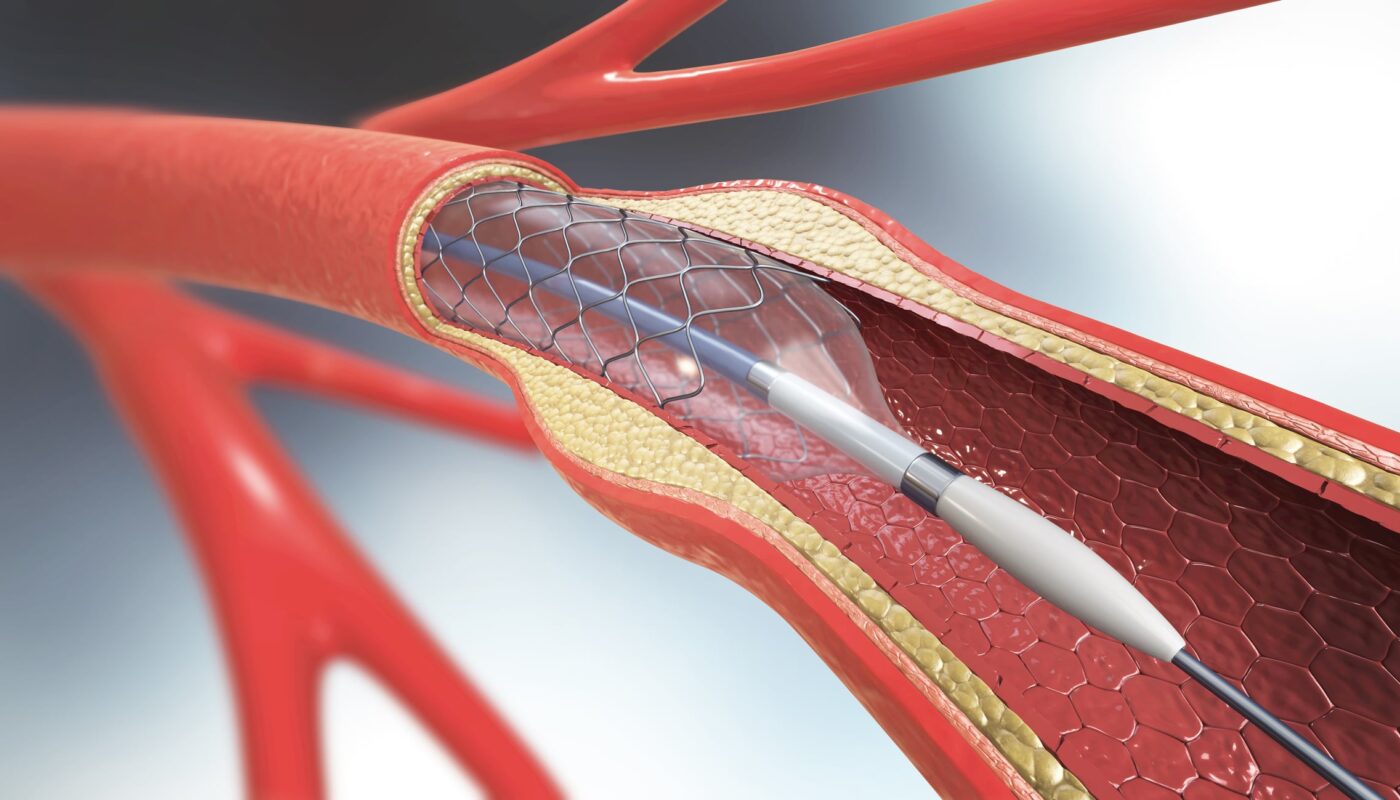What is Vascular Embolization?
Vascular embolization is a minimally invasive procedure where small particles are injected into blood vessels to block blood flow to an area of the body. During an embolization procedure, interventional radiologists access the blood vessels through a small incision in the groin or arm. Using real-time imaging like fluoroscopy and computed tomography (CT), they are able to navigate catheters and deliver embolic agents exactly where needed. Common embolic agents include tiny metallic coils, gelatin sponge-like substances called particles, and alcohol. Once implanted in the targeted vessels, these embolic agents cause a small, controlled blockage leading to reduced or no blood flow in that area of tissue.
Conditions Treated with Embolization
Neurovascular Embolization
In neurovascular procedures, Vascular Embolization is often used to treat brain aneurysms and arterial venous malformations (AVMs). Unruptured brain aneurysms can be treated with embolization to prevent potential rupture and reduce the risk of stroke. For AVMs, which are abnormal tangled networks of arteries and veins in the brain, embolization helps block blood flow to these abnormal vessels and reduce the risk of bleeding.
Uterine Fibroid Embolization
Uterine fibroid embolization, also called UFE, is a treatment option for uterine fibroids. Fibroids are noncancerous growths in the uterus that can cause heavy bleeding, painful periods, and pressure symptoms. During UFE, small particles are used to block the blood vessels supplying the fibroids, causing them to shrink and symptoms to improve. This can help avoid the need for hysterectomy in many cases.
Tumor Embolization
For certain cancerous tumors, embolization may be used pre-operatively to shrink the tumor size by reducing its blood supply. Common tumor types treated this way include liver cancer and kidney cancer. This pre-operative embolization can make later surgery safer and more effective by reducing blood loss. Postsurgical embolizations can also help control tumor recurrence by blocking remaining blood vessels feeding any residual cancerous tissue.
Other Uses
Other conditions where embolization plays a role include gastrointestinal bleeding, such as from gastric or duodenal ulcers. Embolization of problematic arteries can help control acute bleeding or prevent rebleeding. Destroying abnormal arteries in the pelvis or bones through embolization helps treat conditions such as traumatic arteriovenous fistulas. It is also used for palliative treatment of painful bone metastases by depriving the cancer of its blood supply.
The Embolization Procedure
During an Vascular Embolization, imaging guides placement of a thin, flexible catheter into the femoral or radial artery in the groin or wrist. Local anesthesia is used at the insertion site to numb any discomfort. The patient is awake but sedated and monitored. Using real-time fluoroscopy or CT imaging, interventional radiologists navigate the catheter through the arteries, guided by landmarks, until it reaches the target vessel.
Once in position, embolic agents are injected through the catheter. These cause temporary or permanent occlusion of the blood vessels depending on the agents used. As the blood flow decreases, the targeted pathological tissue like tumors or fibroids begins to shrink and symptoms improve over time. The catheter is then removed, and pressure is applied to close the small insertion wound site. The whole procedure may take 1-3 hours depending on complexity but does not require an overnight hospital stay in many cases.
Post Procedure Care and Outcomes
After an embolization procedure, patients need to take it easy for a few days to rest. Mild pain or soreness at the insertion site is common but resolves with over-the-counter medication. Some side effects like fever, nausea and pain are possible depending on the condition treated, but serious complications are rare with modern techniques.
Outcomes depend on the health condition but embolization often provides significant relief from symptoms in conditions like uterine fibroids, tumors and vascular malformations with minimal side effects compared to alternative treatments. It allows many patients to avoid or delay more invasive surgeries. With neurovascular procedures, it helps prevent potential bleeding episodes or rupture. Overall, vascular embolization provides an important minimally invasive treatment option for various medical conditions.
*Note:
1. Source: Coherent Market Insights, Public sources, Desk research
2. We have leveraged AI tools to mine information and compile it.



